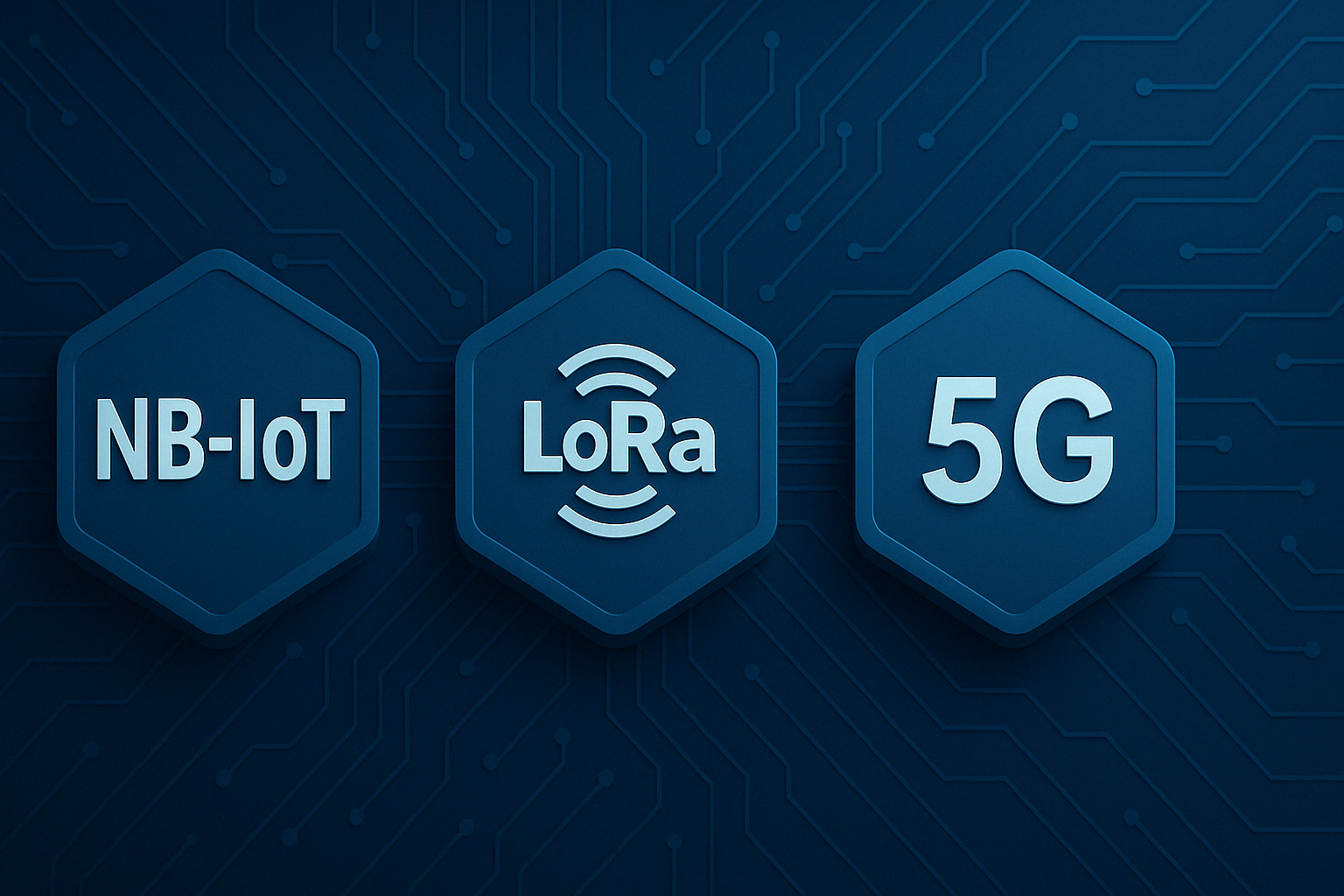
Highlights
- Discover which communication technology offers the best energy efficiency for long-term device performance,
- Learn how different technologies measure up when it comes to coverage in urban vs. remote environments,
- Explore the cost implications of choosing cutting-edge solutions versus proven technologies for your deployment
The fast growth of IoT and smart meters has made choosing the right communication technology key to a project's success. Each technology offers distinct advantages in terms of energy efficiency, coverage, and cost, all of which significantly impact device performance and total cost of ownership.
This article provides a detailed comparison of three prominent connectivity solutions — NB-IoT, LoRaWAN, and 5G — to guide your decision-making process and ensure alignment with your deployment environment. At Noitac, we specialize in the design and delivery of communication modules tailored to the specific requirements of smart device manufacturers.
Power Consumption: Optimizing Device Longevity
- LoRaWAN: Known for its exceptionally low power consumption, LoRaWAN is highly suited for battery-operated devices. This capability enables years of maintenance-free operation, making it a preferred choice for remote applications such as water and gas meters.
- NB-IoT: Offers commendable energy efficiency, leveraging features such as Power Saving Mode (PSM) and extended Discontinuous Reception (eDRX). However, as a cellular technology, its energy consumption is generally higher than that of LoRaWAN.
- 5G (mMTC): While 5G introduces advanced capabilities, its energy efficiency remains limited in scenarios such as smart metering. Its current power demands make it more suitable for mains-powered devices or high-data-rate applications.
Coverage: Aligning Technology with Deployment Needs
- LoRaWAN: Excels in long-range communication, offering coverage up to 15 km in rural areas, along with robust signal penetration in challenging environments, such as basements or remote locations.
- NB-IoT: Operates on licensed frequency bands, delivering stable and interference-resistant connectivity. It is particularly effective in dense urban areas and provides deep indoor coverage, making it ideal for devices deployed inside buildings or underground.
- 5G: Designed for high-speed, low-latency connectivity, 5G currently has limited geographical coverage, especially in rural or remote areas. Its range constraints require careful consideration for large-scale or dispersed deployments.
Cost: Evaluating Infrastructure and Operational Expenses
- LoRaWAN: Enables private network deployment, reducing reliance on third-party infrastructure and keeping operational costs low over the long term. This makes it a cost-effective solution for large-scale or remote deployments.
- NB-IoT: Benefits from existing cellular infrastructure, minimizing initial investment costs. However, ongoing expenses are dependent on operator pricing structures, including connectivity and SIM management fees.
- 5G: The most resource-intensive option, 5G involves higher costs for modules and network access. It is best suited to advanced applications where its superior bandwidth and real-time processing capabilities offer clear value.
Determining the Right Technology for Your Project
Choosing between cutting-edge and field-proven communication technologies is a strategic decision that depends on your market, deployment scale, and product roadmap.
- Future-proof solutions like 5G are the right fit for projects targeting advanced functionalities — real-time monitoring, dynamic data streams, or integration with smart grids. They offer scalability for upcoming services but require higher investment and a market ready to adopt these capabilities.
- Proven standards like LoRaWAN and NB-IoT provide reliability, optimized cost, and energy efficiency, making them ideal for large-scale rollouts in established markets. These technologies have a strong track record in smart metering deployments, especially where long device lifetime and minimal maintenance are key.
At Noitac, we analyze each project’s specific needs — from the target market’s infrastructure maturity to regulatory constraints and operational models — helping you choose the right balance between innovation and stability.
Ready to future-proof your smart metering strategy?
Contact NOITAC today to explore cutting-edge smart metering solutions.


